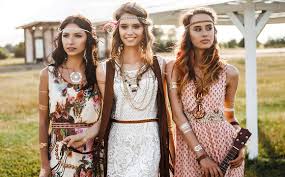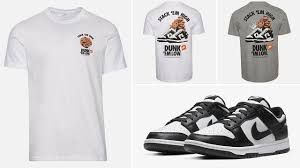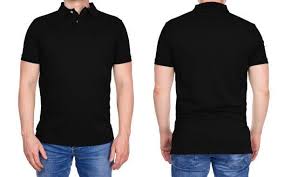The Origins of Boho Chic Style
The boho chic style is more than a fashion trend—it is a cultural expression that draws inspiration from art, freedom, and individuality. The roots of bohemian fashion trace back to the early 19th century, when artists, writers, and intellectuals in Europe embraced unconventional lifestyles and dressed in ways that challenged societal norms. Their clothing often included loose, flowing garments and handcrafted accessories. By the 1960s and 1970s, this aesthetic was revived by the hippie movement, blending elements of global influences, vintage fabrics, and natural silhouettes. The term “boho chic” became popular in the early 2000s, largely due to celebrities like Sienna Miller and Mary-Kate Olsen, who brought a modern yet carefree twist to traditional bohemian fashion.
Characteristics of Boho Chic Fashion
The boho chic style is defined by its relaxed, free-spirited essence. Key elements include maxi dresses, flowy skirts, embroidered blouses, and wide-legged pants. Natural fabrics such as cotton, linen, and silk are common, emphasizing comfort and breathability. Accessories play a crucial role—layered necklaces, oversized hats, fringed bags, and chunky belts create a personalized touch. Footwear often includes sandals, espadrilles, or suede boots. Colors tend to be earthy, inspired by nature, though vibrant patterns and prints are also a signature feature. This combination of eclectic elements makes boho chic fashion both versatile and timeless.
The Evolution of Boho Chic in Modern Fashion
Over the decades, boho chic style has undergone multiple transformations. In the 1970s, it was associated with rebellion, music festivals, and counterculture. In the 1990s, designers revived elements of bohemian dressing, but in a more polished, minimalist manner. By the 2000s, boho chic became a mainstream fashion trend, widely embraced by celebrities and street style enthusiasts. Today, it represents a balance of vintage inspiration and contemporary tailoring. Designers integrate boho details—such as embroidery, patchwork, and fringe—into modern collections, making the look accessible for both everyday wear and high-fashion runways.
Why Boho Chic Appeals Across Generations
One of the reasons boho chic remains popular is its universal appeal. Unlike rigid fashion trends, it allows for individuality and self-expression. Its mix-and-match nature ensures that no two outfits look exactly alike. The style also resonates with values of sustainability, as vintage clothing, thrift finds, and handmade items often form the foundation of a boho wardrobe. Moreover, the emphasis on comfort makes it practical, while the aesthetic diversity—from earthy neutrals to vibrant ethnic prints—caters to a wide audience. Boho chic is not just about dressing; it reflects a lifestyle rooted in creativity, wanderlust, and authenticity.
Key Elements of Boho Chic Style
Certain pieces define the boho chic wardrobe. Maxi dresses with floral prints or flowing silhouettes are iconic. Peasant blouses with embroidery or lace detailing reflect traditional craftsmanship. Kimonos and shawls add layers and texture, while wide-brimmed hats provide a stylish yet functional accessory. Jewelry is typically bold—think stacked bangles, turquoise rings, and layered necklaces. Fringe, suede, crochet, and patchwork fabrics add an artisanal feel. Mixing patterns, such as paisley with florals, is common, creating a harmonious yet eclectic look. Each element contributes to a style that feels effortless but visually rich.
How to Style Boho Chic for Different Occasions
The versatility of boho chic fashion makes it suitable for various settings. For casual outings, a flowy bohemian dress paired with sandals and a woven bag offers effortless elegance. For work, boho chic can be adapted with a tailored blazer over a printed maxi skirt, blending creativity with professionalism. Evening events allow for glamorous interpretations—sequined shawls, statement jewelry, and silk maxi dresses that channel bohemian luxury. At festivals, the full boho spirit comes alive with fringe vests, layered accessories, and bold prints. The adaptability of boho chic ensures it remains relevant in diverse contexts.
Celebrities and the Boho Chic Influence
Celebrities have been instrumental in popularizing the boho chic style. In the 1960s and 1970s, icons like Stevie Nicks and Janis Joplin embodied the free-spirited bohemian image. In the early 2000s, Sienna Miller and Kate Moss redefined boho chic on red carpets and at music festivals, inspiring countless fashion enthusiasts. Today, stars like Vanessa Hudgens, Florence Welch, and the Olsen twins continue to showcase boho chic outfits, influencing global fashion trends. Their styling choices—often highlighted in media outlets like Harper’s Bazaar—ensure boho chic remains a source of inspiration for modern wardrobes.
The Psychology Behind Boho Chic Style
Fashion often reflects personality, and boho chic is no exception. Wearing boho chic outfits conveys creativity, independence, and authenticity. The flowy silhouettes and natural fabrics encourage ease and relaxation, while the bold patterns and accessories communicate artistic individuality. People drawn to boho chic often identify with values of freedom, exploration, and spirituality. The style offers a sense of grounding, connecting wearers to nature and cultural traditions, while also allowing personal experimentation. This psychological resonance helps explain why boho chic continues to attract devoted followers.
Sustainability and the Boho Chic Movement
In today’s fashion landscape, sustainability is a growing priority, and the boho chic style naturally aligns with this shift. Many boho-inspired outfits are created from handmade, upcycled, or vintage pieces, reducing reliance on mass production. The emphasis on artisanal craftsmanship celebrates slow fashion, supporting local artisans and eco-conscious practices. Platforms like The Good Trade frequently highlight boho chic as an example of ethical fashion that blends style with sustainability. This alignment makes the trend especially appealing to environmentally conscious consumers who want fashion that feels authentic and responsible.
Boho Chic in Interior and Lifestyle Trends
Although primarily a fashion style, boho chic has expanded into interior design and lifestyle choices. Bohemian-inspired home décor often features layered textiles, macramé wall hangings, indoor plants, and earthy tones. The philosophy of boho chic—embracing individuality, mixing cultures, and celebrating artistic expression—extends into travel, music, and wellness practices such as yoga and meditation. The holistic approach makes boho chic more than a way of dressing; it becomes a way of living authentically and creatively.
The Future of Boho Chic Style
Looking ahead, the boho chic style is likely to continue evolving while retaining its core values of individuality, creativity, and comfort. With designers experimenting with digital prints, sustainable fabrics, and cross-cultural influences, the aesthetic will adapt to modern demands while staying true to its roots. The popularity of vintage shopping and second-hand platforms ensures boho chic will remain relevant for eco-conscious consumers. Whether on the runway, at music festivals, or in everyday wardrobes, boho chic will continue to embody the timeless spirit of freedom and artistic expression.












